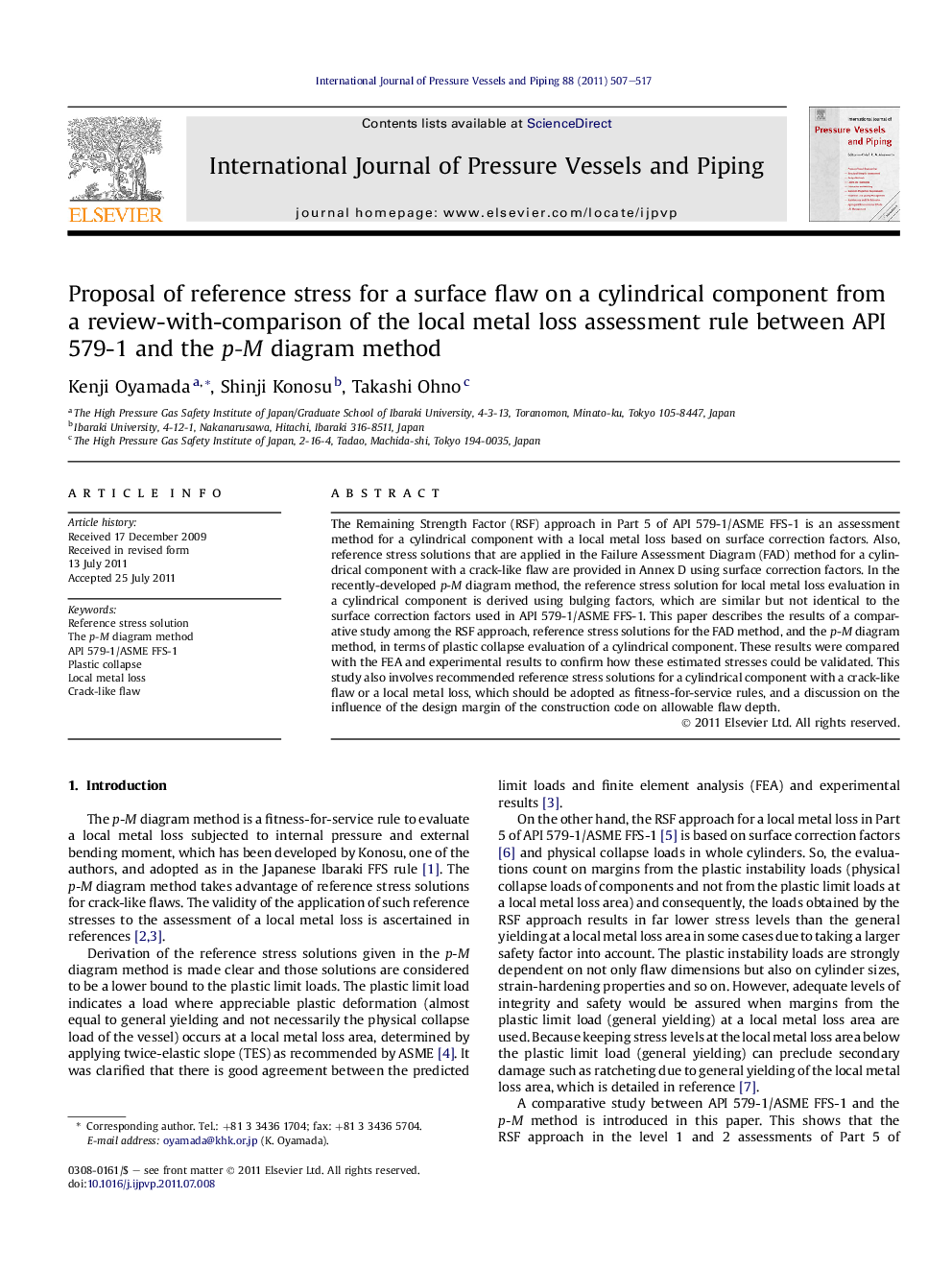| Article ID | Journal | Published Year | Pages | File Type |
|---|---|---|---|---|
| 790785 | International Journal of Pressure Vessels and Piping | 2011 | 11 Pages |
The Remaining Strength Factor (RSF) approach in Part 5 of API 579-1/ASME FFS-1 is an assessment method for a cylindrical component with a local metal loss based on surface correction factors. Also, reference stress solutions that are applied in the Failure Assessment Diagram (FAD) method for a cylindrical component with a crack-like flaw are provided in Annex D using surface correction factors. In the recently-developed p-M diagram method, the reference stress solution for local metal loss evaluation in a cylindrical component is derived using bulging factors, which are similar but not identical to the surface correction factors used in API 579-1/ASME FFS-1. This paper describes the results of a comparative study among the RSF approach, reference stress solutions for the FAD method, and the p-M diagram method, in terms of plastic collapse evaluation of a cylindrical component. These results were compared with the FEA and experimental results to confirm how these estimated stresses could be validated. This study also involves recommended reference stress solutions for a cylindrical component with a crack-like flaw or a local metal loss, which should be adopted as fitness-for-service rules, and a discussion on the influence of the design margin of the construction code on allowable flaw depth.
► We compared local metal loss assessment rule between API 579-1 and the p-M method. ► Experiments and FEA verified the p-M estimate stress state around a flaw accurate. ► API 579-1 for local metal loss may underestimate stress state for certain conditions. ► Existing reference stresses for crack-like flaws may underestimate stress state too. ► We propose the reference stress for a surface flaw subjected to pressure and moment.
